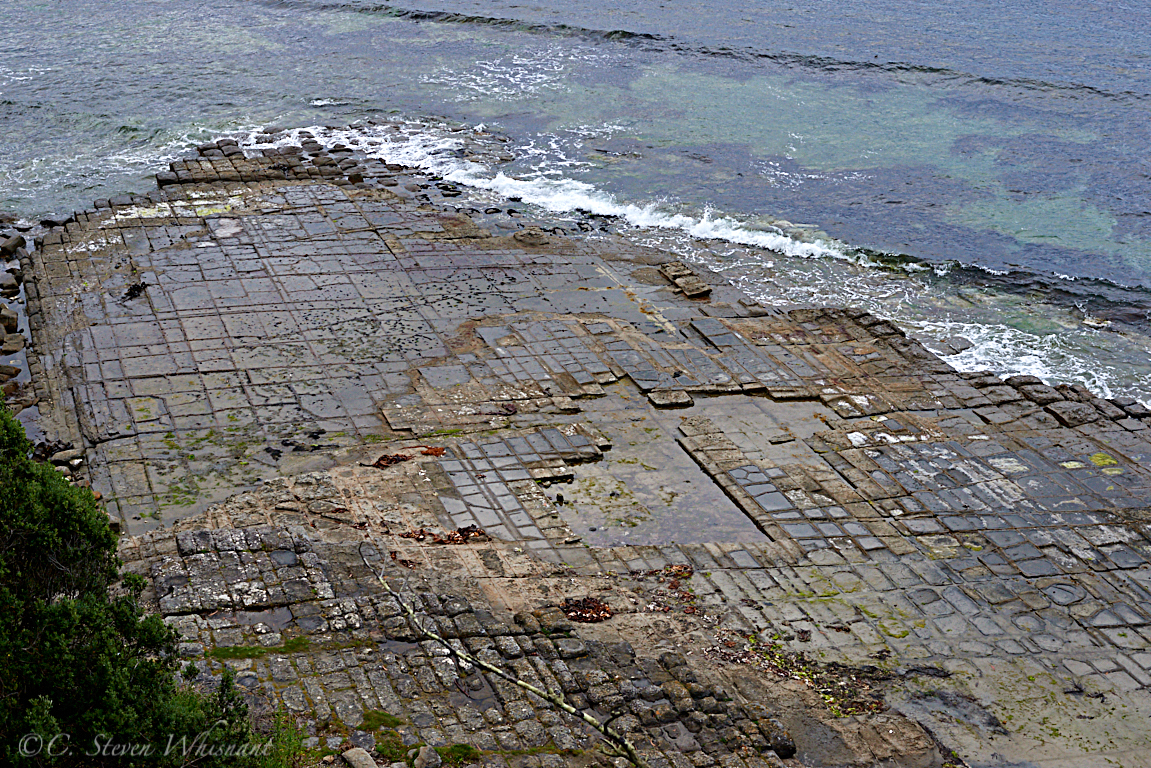Just a little way along the coast, we come to the Tessellated Pavement.
At the water level is a broad section of stone that has been broken, at the surface, into rectangular sections. According to Wikipedia, the tessellation happens here in two ways:
The pan formation is a series of concave depressions in the rock that typically forms beyond the edge of the seashore. This part of the pavement dries out more at low tide than the portion abutting the seashore, allowing salt crystals to develop further; the surface of the "pans" therefore erodes more quickly than the joints, resulting in increasing concavity.[2]The loaf formations occur on the parts of the pavement closer to the seashore, which are immersed in water for longer periods of time. These parts of the pavement do not dry out so much, reducing the level of salt crystallisation. Water, carrying abrasive sand, is typically channelled through the joints, causing them to erode faster than the rest of the pavement, leaving loaf-like structures protruding.[2]
In addition, there are sections where this covered with plants and animals. This fracturing of the surface creates an array of useful niches for life.
It is not all rectangles. Sometimes there are diagonal cracks that run a long distance across the surface.
Here is a good view of the "loaf" type tessellation.
And in the cracks we find shellfish and seaweed.








No comments:
Post a Comment
We enjoy hearing from our readers.